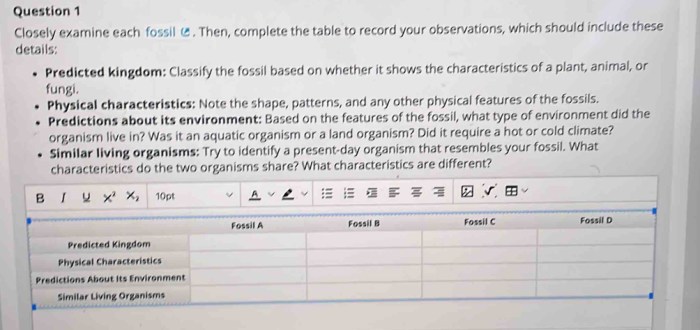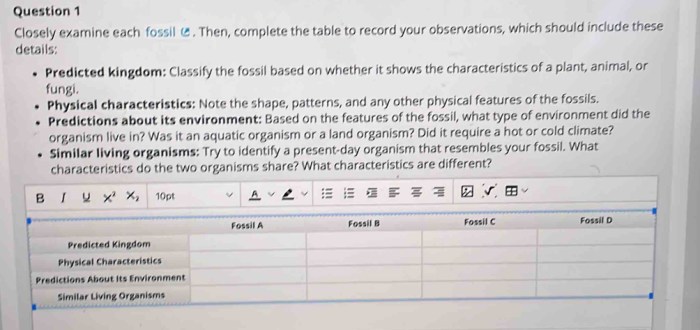
Definition of image recognition is the ability of a computer system to identify and classify objects, scenes, or features within an image. This technology, used in countless applications, is more than just a futuristic concept; it’s already shaping our daily lives. From medical diagnosis to self-driving cars, image recognition is revolutionizing industries and improving our world. This comprehensive guide delves into the core concepts, exploring the historical evolution, deep learning techniques, and diverse applications.
We’ll explore the fundamental concepts behind image recognition, from image preprocessing to feature extraction, and discuss various classification algorithms. The role of deep learning in modern image recognition, including convolutional neural networks (CNNs), will be examined. We’ll also analyze real-world applications in diverse fields like medicine, transportation, security, and content moderation, highlighting their benefits and challenges. Finally, we’ll address ethical considerations, evaluation metrics, and future trends in this exciting field.
Introduction to Image Recognition
Image recognition is a field of artificial intelligence (AI) focused on enabling computers to “see” and understand images in the same way humans do. This involves training algorithms to identify and classify objects, scenes, and activities within images. It’s a rapidly evolving field with significant applications in diverse areas, from medical diagnostics to autonomous vehicles.The fundamental concept behind image recognition is to teach computers to extract meaningful information from raw pixel data.
This process often involves complex algorithms that analyze various features within an image, such as shapes, textures, colors, and spatial relationships. These features are then used to categorize and identify the objects or scenes present.
Fundamental Concepts
Image recognition systems rely on a combination of image processing techniques and machine learning algorithms. Image processing techniques involve pre-processing the input image to enhance its quality and highlight relevant features. Machine learning algorithms, such as convolutional neural networks (CNNs), are then trained on large datasets of labeled images to learn the patterns and characteristics associated with different objects or classes.
The training process involves adjusting the parameters of the algorithm to improve its accuracy in classifying new images.
Historical Development
Early image recognition methods were based on handcrafted features, requiring significant manual effort to define and extract features. These methods often had limited accuracy and were not easily adaptable to new datasets. The advent of machine learning, particularly the development of deep learning techniques and convolutional neural networks, has dramatically improved the accuracy and efficiency of image recognition.
Deep learning models can automatically learn complex features from large datasets, leading to significant improvements in performance. This progress has been driven by the availability of larger and more diverse datasets, along with advancements in computing power.
Examples in Everyday Life
Image recognition is increasingly integrated into our daily lives. Examples include facial recognition for unlocking smartphones, object detection in self-driving cars, and image tagging on social media platforms. These applications demonstrate the widespread impact of image recognition technology.
Types of Image Recognition Applications
| Application Type | Description | Example |
|---|---|---|
| Medical Imaging | Analyzing medical images (X-rays, CT scans, MRIs) to detect diseases or abnormalities. | Identifying cancerous tumors in mammograms, detecting fractures in X-rays. |
| Self-Driving Cars | Enabling vehicles to perceive their surroundings and make decisions for safe navigation. | Detecting pedestrians, traffic signals, and other vehicles to avoid collisions. |
| Facial Recognition | Identifying individuals based on their facial features. | Unlocking phones, security access control, and law enforcement applications. |
| Retail | Image recognition is increasingly used in retail for tasks such as inventory management and product identification. | Automated inventory counting in stores, verifying product authenticity. |
| Agriculture | Image recognition plays a crucial role in precision agriculture by assisting in crop monitoring and yield prediction. | Detecting diseases or pests in crops, assessing plant health, and optimizing irrigation. |
Core Components of Image Recognition Systems
Image recognition, a cornerstone of artificial intelligence, hinges on a sophisticated interplay of components. These components work in concert to extract meaningful information from images, enabling machines to “see” and interpret visual data. Understanding these core components is crucial for developing effective and accurate image recognition systems.
Image Preprocessing
Image preprocessing is a crucial initial step in image recognition. It involves transforming raw image data into a format suitable for subsequent processing. This often includes tasks like resizing, cropping, and color adjustments to eliminate irrelevant details and enhance the clarity of the image. Normalization is another important technique to adjust the pixel values within a consistent range, which can significantly impact the performance of feature extraction algorithms.
- Resizing: Adjusting the dimensions of the image to a standard size, often for compatibility with algorithms or to reduce computational load.
- Cropping: Removing unnecessary parts of the image, focusing on the region of interest.
- Color Adjustments: Techniques like color balancing and contrast enhancement to improve image quality and highlight relevant features.
- Noise Reduction: Filtering out random variations in pixel values to reduce distractions and improve feature extraction.
- Normalization: Scaling pixel values to a specific range (e.g., 0-1), ensuring consistency and preventing algorithms from being overly influenced by specific pixel intensities.
Feature Extraction Methods
Feature extraction is the process of identifying distinctive characteristics within an image. These features are crucial for classification and enable the system to differentiate between different objects or concepts. Different methods are suitable for various types of images and tasks.
- Edge Detection: Identifying boundaries and edges in an image, highlighting the contours of objects. This method is particularly effective for identifying shapes and object boundaries in various contexts.
- Texture Analysis: Describing the surface characteristics of an image, considering patterns and variations in pixel values. This is essential for recognizing materials and textures, like wood grain or fabric patterns.
- SIFT (Scale-Invariant Feature Transform) and SURF (Speeded Up Robust Features): Robust algorithms for extracting local features that are invariant to changes in scale, rotation, and illumination. They are widely used for object recognition and image matching.
- Haar Cascades: A method often used in object detection, particularly in facial recognition systems, employing a hierarchical structure of features to classify objects efficiently.
Classification Algorithms
Classification algorithms are used to categorize images based on extracted features. These algorithms learn patterns from labeled training data and use them to predict the class of unseen images.
- Support Vector Machines (SVMs): Effective in separating different classes in high-dimensional feature spaces. They are known for their efficiency and ability to handle complex relationships between features and classes.
- K-Nearest Neighbors (KNN): A simple algorithm that classifies an image based on the majority class of its k-nearest neighbors in the feature space. It’s relatively straightforward but can be computationally intensive for large datasets.
- Convolutional Neural Networks (CNNs): Powerful deep learning models designed for image analysis. Their hierarchical structure and ability to learn complex features make them highly accurate for many image recognition tasks.
Impact of Feature Extraction Methods on Recognition Accuracy
The choice of feature extraction method significantly affects the accuracy of image recognition. Methods like SIFT and SURF, which capture robust and invariant features, often lead to higher accuracy compared to simpler methods. For example, in satellite imagery analysis, texture analysis is crucial to differentiate between different land cover types.
Comparison of Classification Algorithms
| Algorithm | Strengths | Weaknesses |
|---|---|---|
| SVM | Effective in high-dimensional spaces, relatively efficient | Can be computationally intensive for large datasets, may require careful parameter tuning |
| KNN | Simple and intuitive | Computationally expensive for large datasets, sensitive to feature scaling |
| CNN | Highly accurate, capable of learning complex features | Requires significant computational resources, can be difficult to train |
Deep Learning in Image Recognition: Definition Of Image Recognition

Deep learning, a subset of machine learning, has revolutionized image recognition. Its ability to automatically learn complex features from raw image data, without explicit programming, has led to unprecedented accuracy and performance in various applications. This powerful technique is now a cornerstone of modern image recognition systems.Deep learning models excel at extracting intricate patterns and relationships within images, surpassing traditional methods that relied on handcrafted features.
This allows systems to identify objects, classify scenes, and understand visual content with remarkable precision. The capability to learn complex visual hierarchies has dramatically improved the accuracy of tasks like facial recognition, medical image analysis, and self-driving cars.
Role of Deep Learning in Modern Image Recognition
Deep learning has become the dominant force in image recognition due to its ability to learn hierarchical representations of visual data. This allows the system to identify intricate patterns and relationships within images, enabling accurate classification and object detection. The power of deep learning stems from its ability to learn complex features from large datasets, a key factor in achieving high accuracy.
Different Deep Learning Architectures for Image Recognition
Convolutional Neural Networks (CNNs) are the most prevalent deep learning architecture for image recognition. CNNs leverage convolutional layers to extract spatial features from images, learning filters that identify specific patterns and edges. These filters are automatically learned through training on large datasets, resulting in highly effective image recognition models. Other architectures like Recurrent Neural Networks (RNNs) and Vision Transformers (ViT) are also gaining traction, particularly for tasks requiring context or sequential information.
Advantages of Using Deep Learning in Image Recognition
Deep learning models offer significant advantages over traditional methods. Their ability to automatically learn features eliminates the need for manual feature engineering, saving significant time and effort. This automated feature extraction results in higher accuracy, often exceeding the performance of human-level recognition in specific tasks. Furthermore, deep learning models can generalize well to unseen data, a crucial characteristic for practical applications.
Disadvantages of Using Deep Learning in Image Recognition
Despite its advantages, deep learning also has limitations. Training deep learning models often requires substantial computational resources and large datasets. The “black box” nature of some models can make it difficult to understand how they arrive at specific decisions, a critical consideration in safety-critical applications. The reliance on large datasets can also pose ethical concerns regarding data bias and privacy.
Impact of Large Datasets on the Performance of Deep Learning Models
Large datasets are crucial for training effective deep learning models. The more data a model is trained on, the better it can generalize and recognize patterns in unseen images. For example, a model trained on a vast dataset of medical images can achieve high accuracy in identifying diseases, leading to better patient outcomes. Datasets with diverse and representative samples are particularly important to mitigate bias and ensure accurate predictions across various populations.
Types of Convolutional Neural Network Architectures
| Architecture | Characteristics |
|---|---|
| LeNet-5 | Early CNN architecture, relatively simple, effective for handwritten digit recognition. |
| AlexNet | Pioneering architecture, used ImageNet dataset for training, significant improvement in image classification accuracy. |
| VGGNet | Deep CNN architecture with many layers, known for its high accuracy and robustness. |
| GoogLeNet (Inception) | Introduced Inception modules to improve computational efficiency and performance, excels in image classification tasks. |
| ResNet | Deep architecture using residual connections to address the vanishing gradient problem in very deep networks. Demonstrates impressive performance on various datasets. |
Applications of Image Recognition

Image recognition, powered by sophisticated algorithms and deep learning models, has permeated numerous sectors, revolutionizing how we interact with the world around us. From diagnosing diseases to enabling autonomous vehicles, the applications are diverse and impactful. This section delves into the practical applications of image recognition across various fields, highlighting its crucial role in advancing technology and improving our lives.
Medical Diagnosis
Image recognition is transforming medical diagnosis, particularly in areas like radiology and pathology. Automated systems can analyze medical images like X-rays, CT scans, and MRIs to detect anomalies and patterns indicative of diseases. This capability allows for faster and more accurate diagnoses, potentially leading to earlier interventions and improved patient outcomes. For instance, image recognition models can identify cancerous cells in tissue biopsies with higher precision than human pathologists in some cases, potentially accelerating treatment decisions.
Self-Driving Car Technology
Image recognition is fundamental to the development of self-driving cars. Sophisticated computer vision systems analyze images from cameras and sensors to perceive the environment, interpret road signs, identify pedestrians and other vehicles, and navigate accordingly. Accurate and real-time image recognition is critical for safe and reliable autonomous driving. This includes identifying objects like traffic lights, lane markings, and other vehicles, enabling the car to make informed decisions about speed, braking, and steering.
Security Systems
Image recognition is increasingly integrated into security systems to enhance surveillance and access control. Facial recognition systems, for example, can identify individuals in real-time, improving security in public spaces and private environments. These systems can help identify suspects, track individuals, and verify identities, providing a layer of enhanced security. Furthermore, image recognition can detect suspicious activities, such as loitering or unusual behavior, triggering alerts and facilitating faster responses.
Content Moderation
Image recognition plays a vital role in content moderation across various platforms, particularly in identifying and removing inappropriate or harmful content. This involves detecting images depicting violence, hate speech, or illegal activities, enabling platforms to proactively address potentially harmful material. Image recognition algorithms can flag content that violates community guidelines, preventing the spread of harmful content and maintaining a safe online environment.
Image recognition, essentially, is a computer’s ability to identify and classify objects, faces, or scenes in images. But, this seemingly straightforward technology might be contributing to a deeper issue: students using AI tools like ChatGPT are sometimes less motivated to learn fundamental concepts, as detailed in this article about why students using ai avoid learning. Ultimately, understanding image recognition requires a nuanced approach that goes beyond simple pattern matching, emphasizing deeper comprehension and critical thinking.
This is especially critical for social media and e-commerce platforms to ensure user safety.
Real-World Applications and Benefits
| Application | Benefits |
|---|---|
| Medical Diagnosis | Faster, more accurate diagnoses, earlier interventions, improved patient outcomes, potentially reduced human error in identifying anomalies. |
| Self-Driving Cars | Enhanced safety, improved driving efficiency, potential for accident reduction through improved object detection and response. |
| Security Systems | Improved surveillance, enhanced access control, faster response times to suspicious activities, reduced security breaches. |
| Content Moderation | Proactive removal of inappropriate content, maintenance of a safe online environment, reduction in the spread of harmful content, better community guidelines enforcement. |
Challenges and Future Trends in Image Recognition
Image recognition, while rapidly advancing, still faces significant hurdles. Current systems often struggle with nuanced scenarios, diverse image types, and the need for more robust and accurate results. Understanding these limitations and the emerging trends is crucial for future advancements. This exploration delves into the challenges and promising directions for image recognition.
Limitations of Current Image Recognition Systems
Current image recognition systems, while impressive, exhibit limitations in various aspects. They can be prone to errors in complex or poorly lit environments, struggle with subtle variations in object appearances, and may misinterpret images with significant distortions or occlusions. For example, a system trained on images of cats in well-lit indoor settings might struggle to identify a cat in a dimly lit outdoor scene, or one partially hidden behind a tree.
This highlights the need for more adaptable and robust models.
Challenges in Handling Diverse and Complex Images
Diverse image types, from medical scans to satellite imagery, pose unique challenges for image recognition systems. Medical images, for instance, often contain intricate details that are crucial for diagnosis. However, these images frequently have low resolution, contain noise, and might exhibit variations in contrast and brightness. Satellite imagery, on the other hand, captures vast scenes, necessitating algorithms that can process enormous amounts of data effectively and accurately identify objects of varying sizes.
These differences demand adaptable algorithms capable of handling varied image characteristics.
Future Trends in Image Recognition
Explainable AI (XAI) is a significant future trend. XAI aims to provide insights into how image recognition models arrive at their conclusions. This transparency is crucial for building trust and fostering acceptance in critical applications such as medical diagnosis and autonomous vehicles. Understanding the reasoning behind a system’s predictions can help identify potential biases and errors, and ultimately improve model accuracy and reliability.
Moreover, the development of more efficient and scalable models for handling large datasets and complex image types is a key focus area.
Need for More Robust and Accurate Image Recognition Systems
The need for robust and accurate image recognition systems is driven by their potential impact on diverse fields. Applications like self-driving cars, medical imaging, and security surveillance require systems that can operate reliably in real-world scenarios, irrespective of lighting conditions, weather, or object occlusions. Failures in these systems can lead to serious consequences. A self-driving car that misinterprets a pedestrian’s gesture or a medical image analysis error can have life-altering impacts.
Performance Comparison of Different Image Recognition Systems
The performance of image recognition systems varies significantly based on the type of image being processed. The table below presents a comparative analysis of different systems across various image types. Note that these are illustrative examples and actual performance metrics depend on the specific dataset and model parameters.
| Image Recognition System | Medical Images | Satellite Imagery | Natural Scenes | Object Detection |
|---|---|---|---|---|
| Convolutional Neural Networks (CNNs) | Good, but susceptible to noise and low resolution | Effective for object detection, but computational cost can be high | Excellent for general recognition | State-of-the-art |
| Support Vector Machines (SVMs) | Can be effective in specific scenarios | Can be computationally intensive for large datasets | Moderate performance | Can be competitive |
| Transfer Learning Models | Potentially good when pre-trained on large datasets | Can be efficient for tasks with limited data | Excellent for specific tasks | Can excel when fine-tuned |
Image Recognition in Specific Domains
Image recognition, a field rapidly advancing with the power of deep learning, is no longer confined to general-purpose applications. Its versatility extends to specialized domains, unlocking powerful insights and automation across diverse sectors. This section dives into image recognition’s unique role in various fields, from analyzing satellite imagery to inspecting industrial components.
Satellite Imagery Analysis
Satellite imagery offers a unique perspective on Earth’s surface, enabling monitoring of environmental changes, urban growth, and disaster response. Image recognition algorithms are crucial for extracting meaningful information from these vast datasets. These algorithms can automatically identify and classify objects like forests, water bodies, and urban areas, facilitating detailed analyses of land use and environmental health. The ability to rapidly process large quantities of satellite imagery is vital for timely responses to natural disasters.
Furthermore, sophisticated algorithms can detect subtle changes in land cover over time, providing crucial data for environmental monitoring and conservation efforts.
Image recognition, simply put, is a computer’s ability to identify and classify objects, people, or scenes in images. It’s a fascinating field, but sometimes we forget the human element in the equation. This leads me to think about the important concept of properly grieving our bodies, as explored in a thoughtful essay properly grieving our bodies essay.
Ultimately, both image recognition and understanding our physical selves are complex processes, requiring careful attention to detail and a deep dive into the data.
Aerial Photography Applications
Aerial photography, encompassing images from drones and other platforms, provides high-resolution views of areas difficult or impossible to access on foot. Image recognition is key in tasks like infrastructure inspection, crop monitoring, and urban planning. Precise object detection and measurement capabilities are essential for accurate assessments and efficient resource allocation. For instance, automated identification of damaged infrastructure in disaster-stricken areas can expedite recovery efforts.
Astronomical Image Analysis, Definition of image recognition
Image recognition techniques play a significant role in analyzing astronomical images, facilitating the identification of celestial objects and the measurement of their properties. By automating the process of object detection and classification, astronomers can significantly accelerate their research. The techniques can distinguish between different types of stars, galaxies, and other celestial phenomena, leading to a better understanding of the universe.
The sheer volume of data generated by telescopes makes automated analysis indispensable.
Industrial Inspection Applications
Image recognition is transforming industrial inspection, offering a non-destructive and automated way to identify defects and ensure product quality. Automated systems can detect flaws in manufactured components, ensuring higher quality standards and reducing production costs. The efficiency gains from eliminating manual inspection are substantial. The accuracy and speed of these systems make them valuable in diverse industries, from automotive manufacturing to electronics assembly.
Table of Specific Applications
| Application | Type of Images | Resulting Output |
|---|---|---|
| Satellite Imagery Analysis | Multispectral satellite imagery, aerial photography | Land use maps, change detection reports, deforestation alerts, urban growth analysis |
| Aerial Photography Inspection | High-resolution aerial images | Infrastructure condition reports, crop health assessments, urban planning data |
| Astronomical Image Analysis | Digital images from telescopes | Cataloging of celestial objects, measurements of properties, identification of new phenomena |
| Industrial Inspection | Images of manufactured components | Automated defect detection, quality control reports, improved production efficiency |
Ethical Considerations in Image Recognition
Image recognition, while offering numerous benefits, presents a complex web of ethical considerations. As the technology becomes more sophisticated and pervasive, understanding and addressing these issues is crucial to ensuring responsible development and deployment. This section delves into the potential biases, misuse, and the importance of fairness and accountability within image recognition systems.
Potential for Bias in Image Recognition Algorithms
Image recognition algorithms are trained on vast datasets. If these datasets reflect existing societal biases, the algorithms will inevitably inherit and perpetuate those biases. For example, if a dataset predominantly features images of light-skinned individuals, an algorithm trained on that data may perform less accurately on images of darker-skinned individuals. This can lead to unfair or discriminatory outcomes in applications like facial recognition for law enforcement or loan applications.
The inherent biases in the data can manifest as systematic errors, potentially misidentifying individuals or failing to recognize certain characteristics.
Examples of Misuse of Image Recognition Technology
The potential for misuse of image recognition technology is significant. Surveillance systems, utilizing image recognition, can raise privacy concerns. The possibility of misidentification or misapplication of this technology in law enforcement can lead to wrongful accusations or discrimination. Additionally, the use of image recognition in social media for content moderation can lead to the suppression of diverse viewpoints or the censorship of specific groups.
In marketing and advertising, targeted ads based on image recognition can create a filter bubble and limit exposure to diverse perspectives.
Image recognition, simply put, is a computer’s ability to identify and classify objects, people, or scenes in images. While the tech is fascinating, it’s worth noting that during economic downturns, like the current one, innovative applications of image recognition can emerge as a silver lining. For instance, exploring how businesses use image recognition during recessions, such as identifying trends in product demand via image analysis from social media, is quite interesting.
Learning about the potential silver lining in this area could give valuable insight into future applications of the technology, and potentially help us better understand the definition of image recognition in a broader context. recession dating silver lining
Importance of Fairness and Accountability in Image Recognition Systems
Ensuring fairness and accountability in image recognition systems is paramount. Fairness necessitates that the systems treat all individuals equally, regardless of their background or characteristics. Accountability means establishing mechanisms to address errors, biases, and unintended consequences of the system’s deployment. This includes transparent data collection practices, rigorous testing for bias, and the development of mechanisms for redress in cases of harm.
Summary of Ethical Concerns, Potential Harms, and Mitigation Strategies
| Ethical Concern | Potential Harm | Mitigation Strategy |
|---|---|---|
| Bias in training data | Inaccurate or discriminatory outcomes in applications; unfair treatment of specific groups | Diverse and representative datasets; rigorous testing for bias; auditing of training data; continuous monitoring and adjustments |
| Misuse in surveillance | Erosion of privacy; potential for wrongful accusations; disproportionate targeting of specific communities | Clear guidelines for data collection and use; robust oversight mechanisms; transparency in data handling; public accountability |
| Lack of transparency and explainability | Difficulty in understanding the decision-making process of the algorithm; reduced trust and acceptance | Development of explainable AI (XAI) techniques; providing clear documentation of the system’s workings; public access to system performance metrics |
| Lack of accountability | Difficulty in addressing errors or biases; reduced responsibility for harmful outcomes | Establishing clear lines of responsibility; developing mechanisms for redress; promoting collaboration between developers, users, and regulators |
Evaluation Metrics for Image Recognition Systems
Image recognition systems are powerful tools, but their performance needs rigorous evaluation. Effective metrics help us understand how well a system identifies and classifies objects in images. These metrics go beyond simple accuracy; they provide a nuanced picture of the system’s strengths and weaknesses. They are crucial for comparing different models, improving system design, and ultimately deploying effective image recognition solutions.
Precision, Recall, and F1-Score
These metrics are fundamental in evaluating the performance of classification tasks, particularly in image recognition. They provide a more comprehensive picture than simple accuracy, as they consider both the positive and negative predictions made by the system.
- Precision measures the proportion of correctly identified positive instances (true positives) among all instances predicted as positive (true positives + false positives). A high precision indicates that the system is less likely to misclassify negative instances as positive. For example, if a system identifies 10 images as “dogs” and 2 of those are actually cats, the precision is 80%.
This means the system is relatively accurate in identifying dogs.
- Recall measures the proportion of correctly identified positive instances (true positives) among all actual positive instances (true positives + false negatives). A high recall indicates that the system is less likely to miss positive instances. In the dog example, if there are actually 12 dogs in the dataset, and the system correctly identifies 10, the recall is 83.3%. This means the system captures most of the dogs.
- F1-score provides a balanced measure of precision and recall. It is the harmonic mean of precision and recall, and is particularly useful when precision and recall are equally important. A higher F1-score indicates a better overall performance. A high F1-score in the dog example suggests that the system is good at both finding dogs and avoiding false positives, which is critical for practical applications.
Confusion Matrices
Confusion matrices are powerful visualization tools that provide a detailed breakdown of the system’s performance on different classes. They are constructed by comparing the predicted class to the actual class for each image in the dataset. This tabular representation makes it easy to identify which classes are frequently confused with one another.
- Each row represents an actual class, and each column represents a predicted class. The values in the matrix represent the counts of instances that were classified as one class but actually belonged to another. For example, the value in the “cat” row and “dog” column would indicate how many images were predicted as “dog” but were actually “cats.” A confusion matrix for a multi-class system might have several rows and columns.
- Analyzing the confusion matrix reveals patterns in the system’s errors. High values along the diagonal indicate high accuracy for each class, while high values off the diagonal suggest confusion between classes. This allows for targeted improvements in the system’s performance.
Interpreting Evaluation Metrics
Interpreting evaluation metrics involves considering the specific application and the trade-offs between precision and recall. For example, in medical image analysis, a high recall might be prioritized to minimize false negatives (missing a disease), even if it comes at the cost of lower precision. In spam filtering, high precision is prioritized to avoid misclassifying legitimate emails as spam.
Various Evaluation Metrics
| Metric | Description | Implications for Image Recognition |
|---|---|---|
| Accuracy | Percentage of correctly classified instances. | Provides a general overview, but can be misleading if classes are imbalanced. |
| Precision | Proportion of correctly predicted positives among all predicted positives. | Important for applications where false positives are costly (e.g., medical diagnosis). |
| Recall | Proportion of correctly predicted positives among all actual positives. | Important for applications where false negatives are costly (e.g., object detection). |
| F1-score | Harmonic mean of precision and recall. | Provides a balanced measure for scenarios where both precision and recall are equally important. |
| AUC (Area Under the ROC Curve) | Measures the ability of a model to distinguish between classes. | Useful for evaluating the overall performance of the classifier, especially when dealing with imbalanced datasets. |
| IoU (Intersection over Union) | Measures the overlap between predicted and actual bounding boxes. | Critical for object detection tasks, providing insights into the accuracy of bounding box predictions. |
Concluding Remarks
In conclusion, image recognition is a rapidly evolving field with a wide range of applications. While challenges remain in handling diverse and complex images, and in ensuring ethical considerations are addressed, the future of image recognition holds immense promise. From its historical roots to its current applications and future trends, this guide provides a comprehensive overview of this crucial technology.





